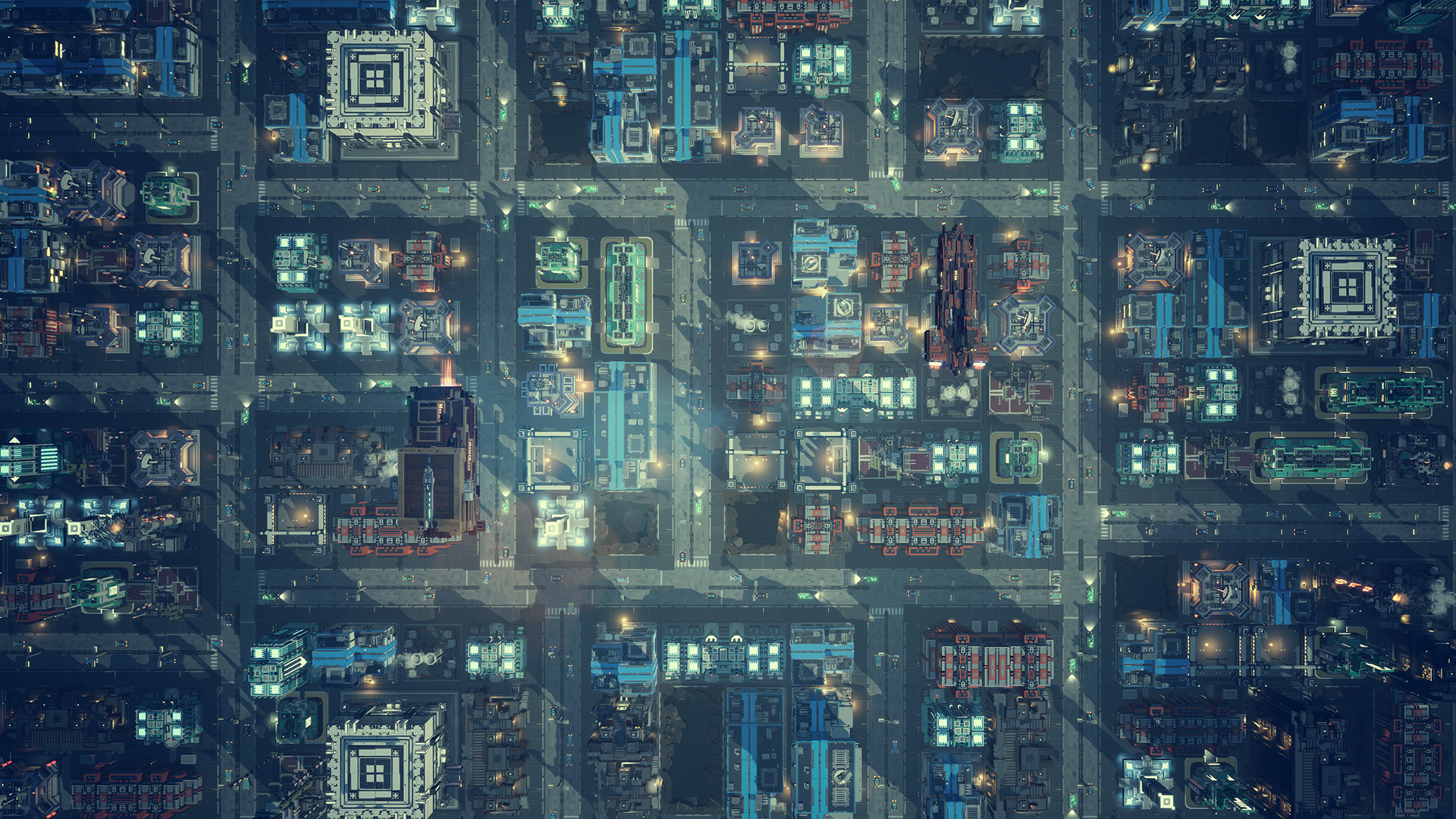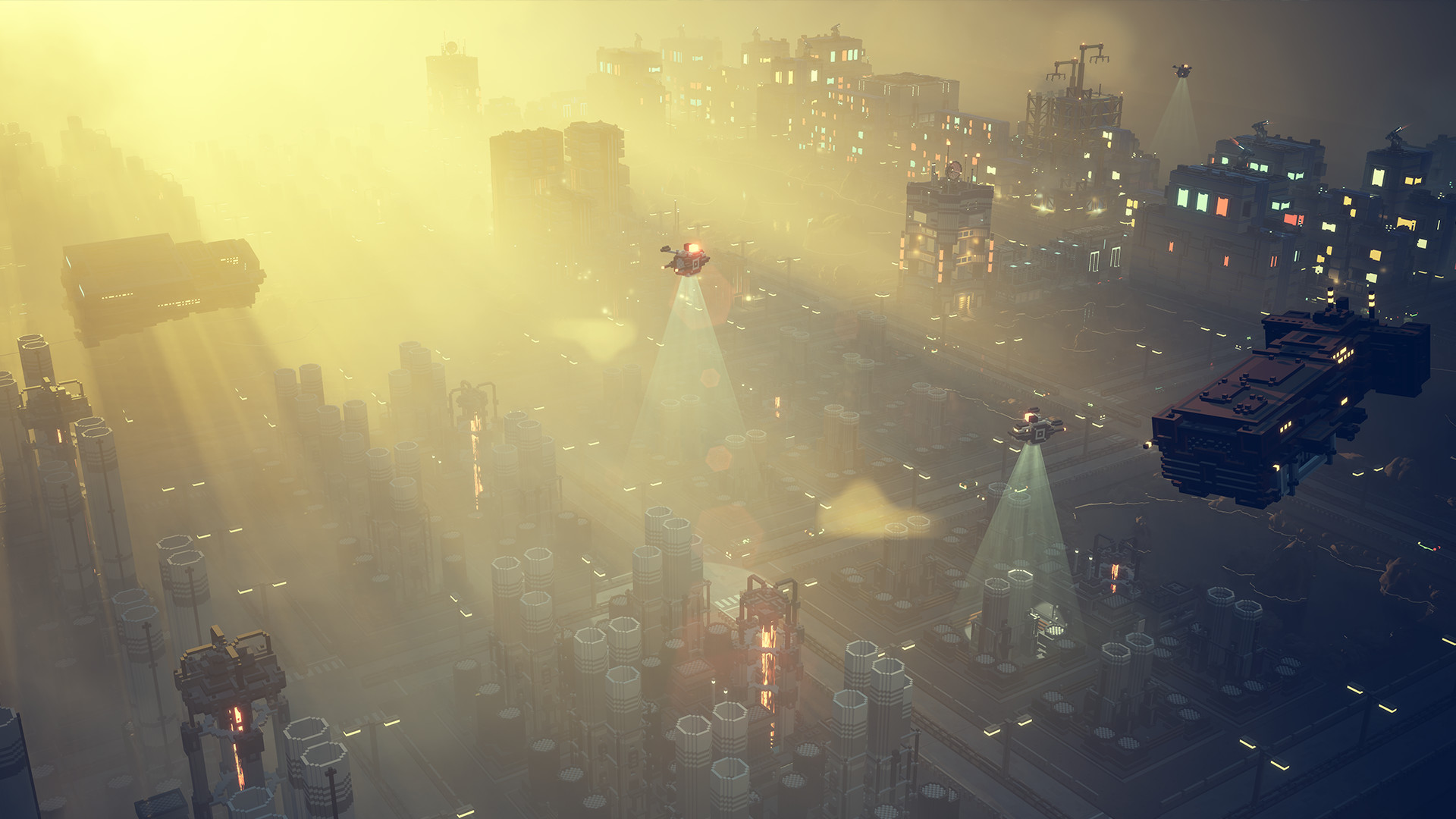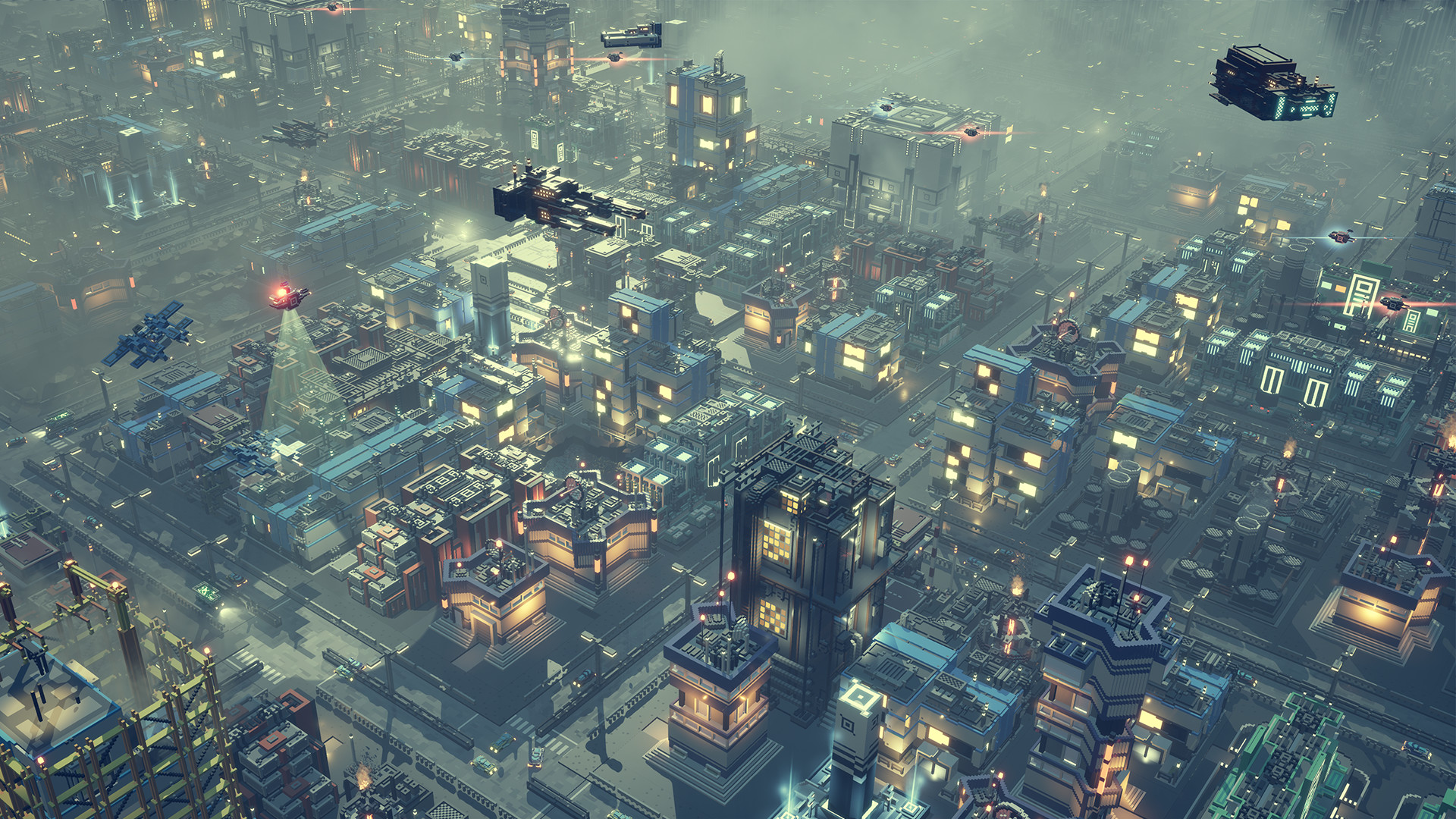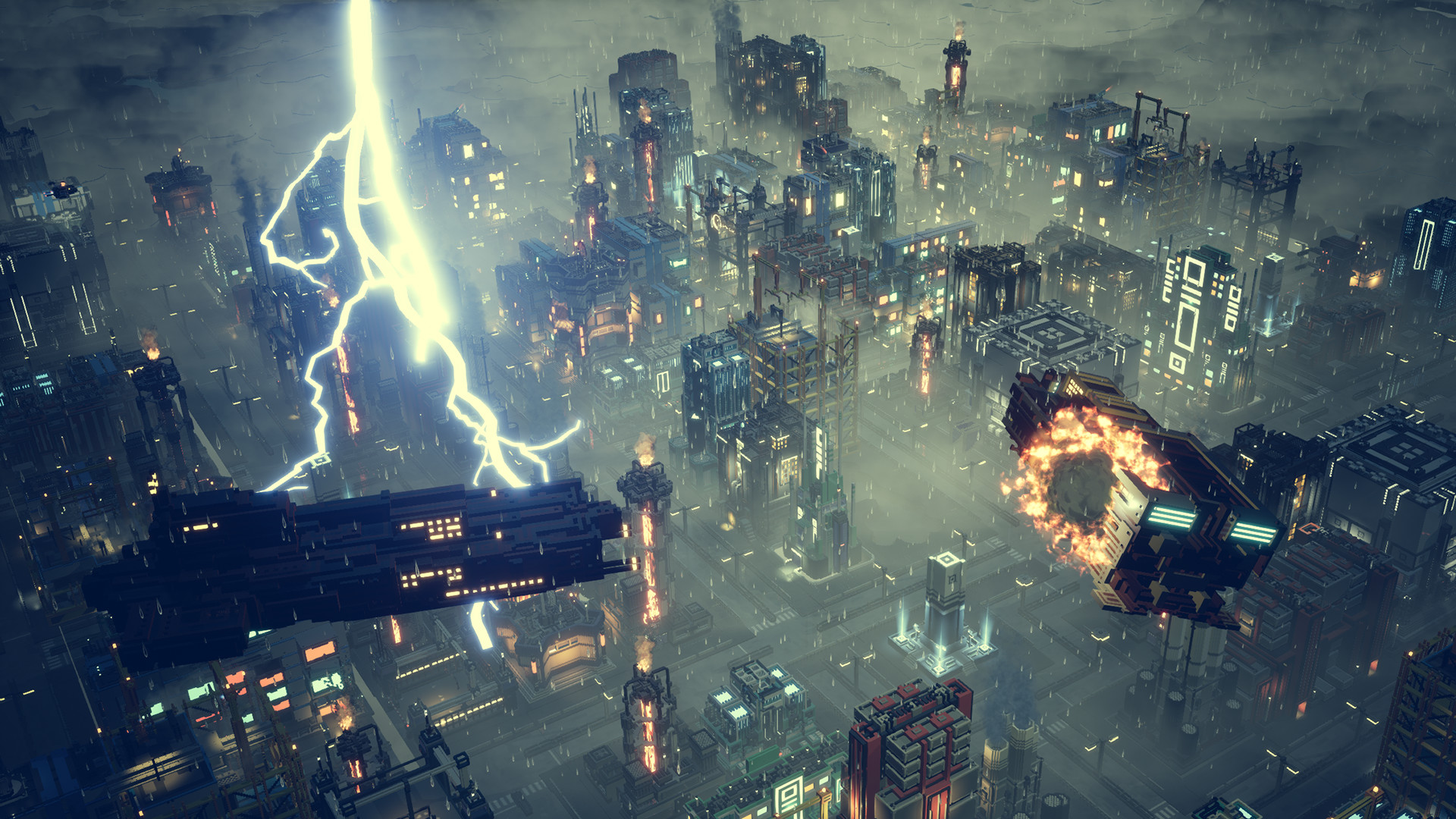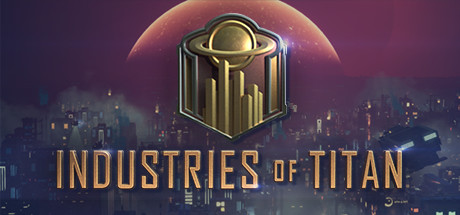These days, a city builder isn’t going to make many waves unless it has some kind of cool catchy feature. Plenty of solid city builders have flown under the radar because they didn’t do anything to stand out. Industries of Titan may just look like an exceptionally stylistic sci-fi city builder, but what makes it unique is on the inside. Literally. You get to build stuff inside of the buildings you create.
(I originally played this on Epic.)
Abbreviated Review: https://youtu.be/VRB5yXgaXbw
Looking Cool is Cool
Industries of Titan caught my eye a long time ago when it first came to the Epic Store. I eventually played it there not long before its release to Steam because I’m impatient. It has a very recognizable style and aesthetic that I can’t say I’ve seen in many sci-fi city builders. Most of the time, games in this genre that adopt the interplanetary setting have a design that is distinct from typical city builders. One that doesn’t mimic the grid-type cities of their terrestrial brothers. However, Industries of Titan embraces a design that has your creations looking more similar to cities you’d find on Earth. Of course, the similarities are only skin-deep.
Industries of Titan takes advantage of the qualities of Unreal Engine to make some beautiful moments of weather and lighting through the day and night cycles within the hostile environment of Titan. There’s plenty of volumetric lighting that amplifies the heavy implementation of atmospheric effects. It all comes together to give this blocky world that neon smoky cyberpunk feel that is reminiscent of Blade Runner.
Buildings in the Buildings
I initially wasn’t aware that Industries of Titan gave you the ability to go inside of buildings to build more things. This feature has a great implementation, but one that also sort of fades away as you get further into the city-building process. Initially, your only capabilities are to build hollow husks of buildings called Factories that contain a building grid within them. You have to build your power, fuel collection (to run the power), habitation pods for civilians, and commercial-watching money generators, among a host of other small features in this confined space. The initial part of the game will have you in there as much as you’re outside working toward more resources.
Once you get well established, there are larger exterior buildings that take over the majority of these roles. It takes a significant amount of resources to unlock them though, so you will spend plenty of time managing these interiors. However, there will come a point when everything is unlocked that you only really go inside of the buildings to build one thing – the processors.
Processors work in a kind of minimalistic “Factorio” way in that you transform your collected through machines into better resources. This is essential to build the much more effective bulk of your buildings like power plants and waste furnaces. Yet, once you get a good number of those going, it’s easy to forget about them as well. This leads the game to feel more like a typical city builder rather than the more unique one that it is initially.
Climbing the Corporate Ladder
There are some other aspects that make Industries of Titan stand out from the crowd. The premise is that you’re a new corporate lackey tasked with heading up this new settlement on this partially terraformed moon. Within this system, you’re going to be receiving influence points that you can spend on getting additional resources and shipments from space – which are your only source for new civilians. Pleasing your boss is an integral part of the experience and can involve building monuments for your overlords to enhance the process.
Along with this, the map has several rebel groups that will try to attack your settlement throughout the game (assuming you’re not in the ‘chill’ game mode). This brings with it an entire subset of gameplay that involves building defensive turrets and flying combat ships to fight against these attackers. You’ll ultimately take the fight to their doorstep to obliterate the hard work of the AI with giant lasers from your floating behemoths. If you click on a ship and go inside while it’s in combat, you can even select and aim your weapons sort of like FTL. It’s not a requirement and I’m not entirely sure if I ever affected the outcome of a battle, but it’s a fun addition nonetheless.
Being Good and Getting Better
Industries of Titan is a solid experience as it is right now, but you can tell that it still needs some work in its Early Access process. While the game looks stunning and has a competent gameplay loop that can carry a session for hours, it feels like it hasn’t quite settled on what exactly it wants to be. Are they going to push more toward the city building aspect where the failure state is having a population that leaves (or dies) due to your poor design? Is the real-time strategy combat going to continue to be the focal point for whether you “win” a game? Will I ever be able to save floorplan and ship designs so I don’t have to meticulously recreate them every time? Those questions along with my desire to see a lot more variety both for interior and exterior buildings make me want to keep following this development.
As far as whether you should get it – I think the answer is dependent on your appreciation of somewhat slow-paced city builders that try to mix things up. As a fan of the genre, I found a lot to love, but I think the desire for more content and late-game depth might disappoint some people. One thing I can say, however, is that it seems that’s coming to the game before it releases. The roadmap has content coming every month as well as plenty more on the horizon, so Industries of Titan joins the small number of Early Access games I’ll keep revisiting each patch to enjoy in new ways.
Zitat:
